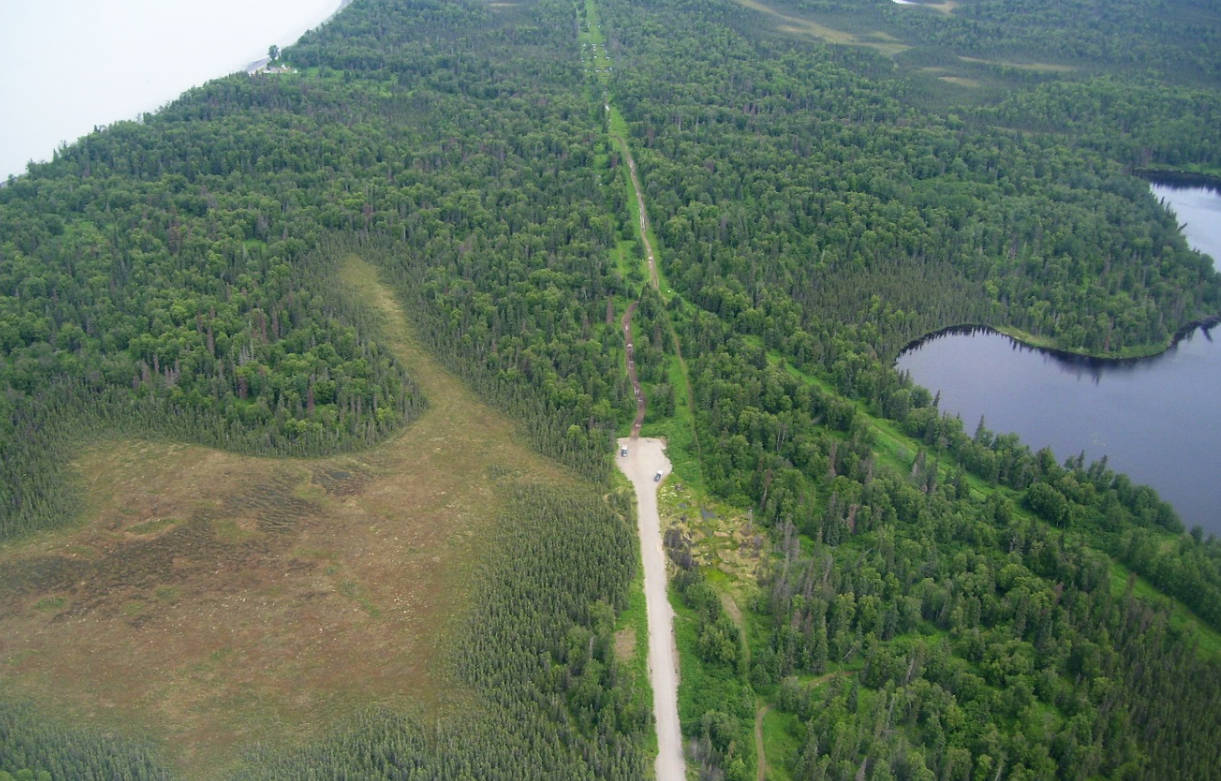The Kenai Peninsula Borough’s plan to extend the Kenai Spur Highway north of Nikiski received its last piece of environmental permitting when Federal Highway Administration officials signed a finding of no significant environmental impact on Wednesday.
Borough Community and Fiscal Projects Manager Brenda Ahlberg said the Highway Administration’s Federal Western Lands Division — which administers the approximately $5 million federal appropriation that will fund the road — is now reviewing construction bid documents before the borough releases them. If all goes well, construction could start as soon as the north road area’s boggy ground freezes.
“The majority of it will have to be done during the winter months, because there’s no way you can run equipment on the majority of that area — it’s pretty mucky,” Ahlberg said.
“They’ll be creating surfaces they can run on in the winter months. I’d believe the initial start-up would be the end of October or early November, when the ground is frozen. … Definitely the first construction period would be this winter, and the second winter would start-up in 2019, and then anything we need to resume in 2020.”
In the 1980s the borough created two residential subdivisions — Gray Cliff and Moose Point — north of Nikiski. Though property was bought and developed there, the 100-foot right-of-way linking these subdivisions to the Spur remains occupied only by the all-terrain vehicle trails that landowners follow to their properties and visitors take into the surrounding Kenai National Wildlife Refuge. The only other cleared land in the area is the easement around a pipeline that Nikiski’s Andeavor petroleum refinery uses to pump fuel to Anchorage, and another presently owned by Hilcorp’s pipeline subsidiary, Harvest Alaska.
Earlier plans to build the road collapsed when costs surpassed the federal earmark appropriated for the project in 1998. The Apache Corporation later planned to extend the road to its oil and gas exploration site about seven miles north of the present road’s end, but the road remained unbuilt when Apache left Alaska in 2016. The present road plans are based on engineering plans, environmental data, and permits that Apache donated to the borough.
The permitting covers an 8.1-mile gravel road that would end at a turnaround just past an existing bridge over Otter Creek. Not all of it may be built, however. The project’s “base bid” would be an approximately four-mile road to just past Leif’s Creek and the Jacob’s Ladder ATV trail, which connects the bluff top to the nearby beach. Two optional additions may be built depending on “the market and the values we can get out of the construction dollar,” Ahlberg said: one would add a further approximately 2.5 miles, and another would complete the road to Otter Creek.
Thursday’s environmental finding doesn’t include the side-project of laying gravel on the Jacob’s Ladder trail. That project, which the borough plans to do alongside the extension construction, is funded with a state legislative grant rather than federal money, Ahlberg said.
Though 14 acres of wetlands would be filled to build the complete road, the Federal Highways Administration found its “overall impact to the resource will likely be positive” compared to the present off-road travel.
“Because of the unimproved nature of the route and presence of wetlands, several large, impassable sinkholes have formed from the (off-road vehicle) traffic that require users to bypass on one side or the other,” the new finding states. “This has resulted in multiple vehicle trails that are spread over a large area rather than being confined to a single alignment or within the platted (right-of-way).”
Erosion and run-off caused by the traffic has degraded Leif’s Creek and Otter Creek, which both host anadromous fish runs, Thursday’s finding states. The extension would “rectify on-going environmental degradation and an on-going source of pollution into Cook Inlet by providing a stable, year- round traveling surface for residents of Gray Cliff and Moose Point Subdivision,” according to the document.
Eight other environmental permits required for the project, including the Army Corps of Engineers’ Clean Water Act permit, the U.S Fish and Wildlife’s incidental eagle take permit, and the Kenai Peninsula Borough’s own permit for construction within 50 feet of anadromous streams, were previously issued between April 2015 and October 2017, according to the finding document.

